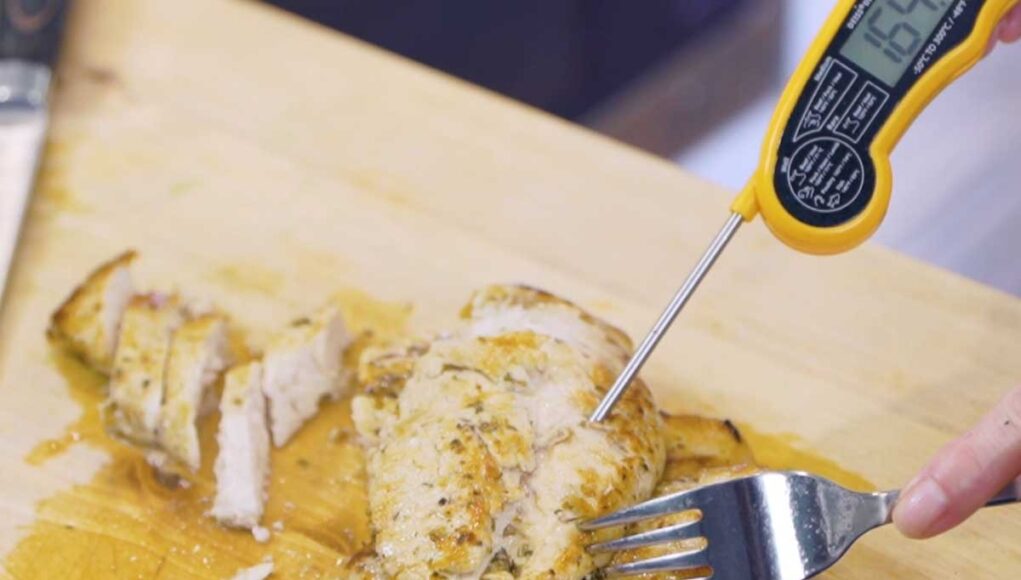Ensuring the accurate temperature measurement of your meat thermometer is crucial for both safety and culinary success. By testing it correctly, you can ensure your meat is always cooked to perfection.
In this article, we will delve into various methods to test your meat thermometer effectively. Whether you are a seasoned chef or a home cook, these insights will help you maintain a high standard of food safety and quality.

Introduction to Meat Thermometers
Meat thermometers are indispensable tools in the kitchen. They help you cook meat to the exact temperature required, ensuring it is safe to eat while maintaining its tenderness and flavor.
Types of Meat Thermometers
There are several types of meat thermometers available, including dial thermometers, digital instant-read thermometers, and wireless thermometer systems. Each has its unique features and advantages.
Why Testing Your Meat Thermometer is Important
Testing your meat thermometer is essential to ensure it provides accurate readings. An inaccurate thermometer can lead to undercooked or overcooked meat, which can be both a health risk and a culinary disappointment.
:max_bytes(150000):strip_icc()/faw-meat-thermometers-test-thermoworks-chefalarm-rkilgore-19-f1a0c722c7b64683814f4c76104c449c.jpeg)
Methods to Test Your Meat Thermometer
Let’s explore the different methods to test your meat thermometer, ensuring that it’s ready for your next cooking session.
Ice Water Method
Fill a glass with ice and then add water to it. Insert the thermometer into the glass without touching the sides and wait until the temperature stabilizes. It should read 32F (0C). This method is straightforward and reliable for testing accuracy.
Boiling Water Method
Bring a pot of water to a rolling boil. Insert the thermometer into the boiling water without touching the pot’s sides. The thermometer should read 212F (100C). Remember, the boiling point of water can vary slightly based on your altitude.
Testing in a Different Medium
To ensure accuracy across a range of temperatures, you might also want to test the thermometer in a medium such as cooking oil, which has a higher boiling point than water.

What to Do if Your Thermometer is Inaccurate
If your thermometer does not give accurate readings during the test, you might need to calibrate it or, in some cases, replace it. Most digital thermometers come with instructions on how to recalibrate them.
Calibrating Your Meat Thermometer
Follow the manufacturer’s instructions for recalibrating your thermometer. This process usually involves adjusting a small screw on the back of the dial thermometers or resetting digital thermometers to zero.
Maintaining Your Meat Thermometer
Regular maintenance is essential for ensuring the longevity and accuracy of your thermometer. Keep it clean and store it safely to avoid damage.
Cleaning Your Meat Thermometer
Always clean your thermometer before and after each use. Use warm water and soap to maintain hygiene and accuracy.
Storing Your Meat Thermometer Safely
Store your thermometer in a protective case or a secure drawer to avoid any physical damage that might affect its accuracy.
Additional Tips for Using a Meat Thermometer
Using a meat thermometer correctly ensures that your meat is cooked to your desired doneness while ensuring food safety.
Proper Placement of the Thermometer
Insert the thermometer into the thickest part of the meat, avoiding bones and fat, to get an accurate reading.
Understanding Temperature Zones
Different meats have different safe temperature zones. For instance, chicken should be cooked to an internal temperature of 165F (74C). Refer to a reliable resource for a comprehensive guide on safe cooking temperatures for various meats.
Common Myths About Meat Thermometers
Several myths about meat thermometers can lead to their misuse. Let’s debunk a few.
Myth: Meat Thermometers Are Only for Professional Chefs
This is not true. Home cooks can greatly benefit from using a meat thermometer to ensure their food is both safe and delicious.
Myth: Digital Thermometers Are Inherently More Accurate
While digital thermometers offer quick readings, their accuracy can vary. Regular testing and calibration are essential.
FAQs on How to Test Meat Thermometers
Q1: Can I test my meat thermometer using other liquids besides water?
A: Yes, you can test your meat thermometer in other liquids like cooking oil to validate its accuracy across a range of temperatures.
Q2: How often should I test my meat thermometer?
A: It is advisable to test your meat thermometer every few months or before significant cooking events to ensure its accuracy.
Q3: Can I use a meat thermometer for other types of food?
A: Yes, meat thermometers can be used to measure the temperature of other foods, such as casseroles and even baked goods, for ensuring proper doneness.
For more information on using a meat thermometer, you might want to check this article from Epicurious.
Further Reading
For related topics, see our guides on seasoning a cast iron griddle and what you can cook on a griddle. These articles can offer further tips and insights to improve your cooking experience.
As an Amazon Associate, I earn from qualifying purchases.









